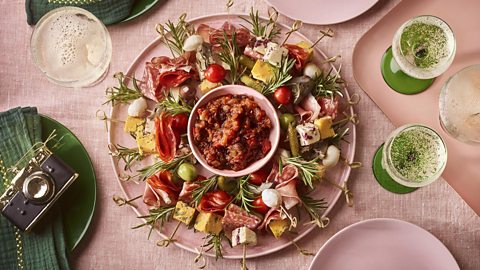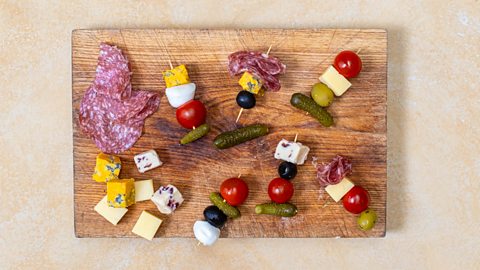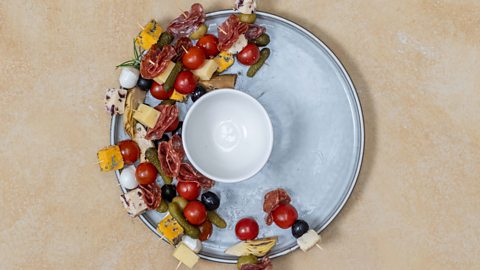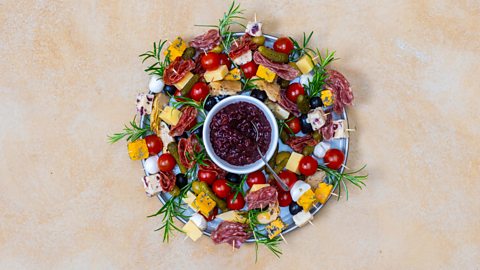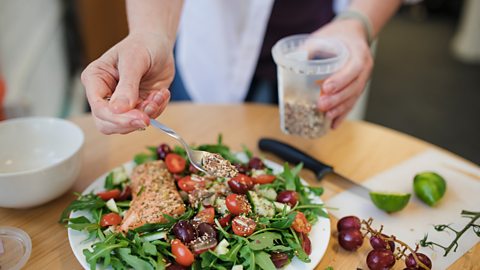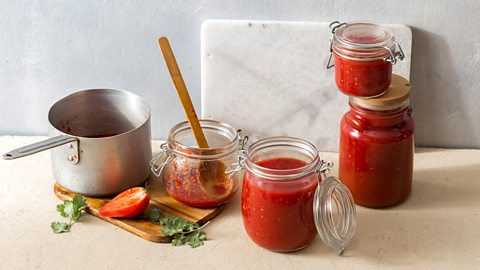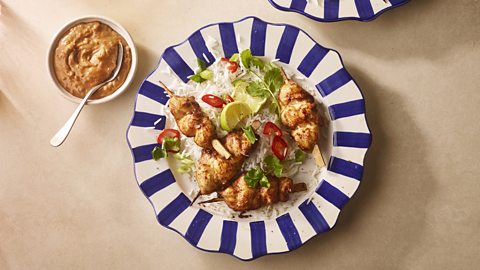How to make the perfect charcuterie board
Charcuterie boards are all the rage for parties. We share tips and ideas to make yours stand out this Christmas
Food takes a leading role over Christmas and New Year, and charcuterie boards are one of the stars of the show. Every festive season their popularity grows exponentially as people look for a party centrepiece that wows. It’s easy to see why. They are full of flavour, aesthetically pleasing and easy to pull together.
Growing up in a Mediterranean household cured meats were forever present in my kitchen. And, as an adult, I’ve made throwing them together with ingredients from the back of the fridge into something of an art form. Here’s how you can perfect yours.
Before you get started
To prevent costs from spiralling you’re going to need to do some preparation, so before you start building your board, consider…
Your guest list
This includes both numbers of diners and their tastes. Avoid unnecessary waste by getting your numbers right. People will want a few slices of each meat, any less and there’s not going to be enough to go round. And there’s no point opting for prosciutto and Parma ham if you and your guests hate the stuff. If you’re partial to jamon serrano or prefer a spicy salami, go with those, focus on what you and your guests will love.
What you already have
Jars of pickled onions, honey, dried fruit and nuts or even left over cranberry sauce are all worthy ingredients to add to your board. Save yourself spending extra money by having a good rummage around. The more variety you have, the more flavours and textures you’re giving your guests.
The utensils
Wooden boards are often preferred, purely for the rustic aesthetic, but you could always go for something more modern like slate or glass. Large or small, find one that suits your needs. If you’ve been hoarding those small dessert ramekins, it’s their time to shine - perfect for olives or chutney, you can dot them around the board.
And, if you have fancy little spoons, a honey dipper or interesting cheese knives at the back of your drawers, now’s the time to get them out.
Want some homemade pickles for your charcuterie board? These are really quick to make
Choosing your ingredients
Charcuterie
Charcuterie is a French term now widely used to refer to meats that have been cured. When making a board I like to have a mix of cured meats. Aim for different textures and flavours, chewy saucisson and smoky hams will all work well together. There are plenty of options to choose from…
Hams
Parma ham: Specific to the Parma region in Italy this ham is cured in sea salt. The flavour is mild and sweet and thinly cut. This pairs well with melon, fig and mozzarella.
Jamon serrano: This dry-cured Spanish ham is also served thinly sliced. This has a mild flavour, due to a short curing process. It pairs well with tomato and salty cheese like Manchego.
Jamon Iberico: A dry-cured Spanish and Portuguese ham made from a specific breed of boar. It has a rich, meaty flavour due to its longer curing process. Let it take centre stage on a crunchy white baguette with a drizzle of olive oil.
Mortadella: Italian cured pork often made with pistachio and black pepper. This has a rich, fatty flavour with a slight peppery spice. Pair it with pistachio, basil, sundried tomato and stracciatella cheese.
York Ham: Classic pink dry-cured ham from Yorkshire. Take it from ham sandwich to ham board by pairing with chutney and pickles.
Cured sausages
Saucisson: French dry-cured sausage which is often flavoured with a range of spices, herbs and garlic. It has a rich flavour and is best served sliced. It pairs well with salty cheese and crusty bread.
Chorizo: Originating from the Iberian Peninsula (Portugal and Spain), it’s flavoured with smoked paprika. Other key flavours depend on the region in which it’s produced. It can be served hot with a drizzle of honey or served cold (sliced) with red pepper and salty cheese.
Salami: Similar to chorizo but sometimes spicier. Salamis will range in flavour between countries and regions. Serve with pickles, dried fruit and antipasti.
To cheese or not to cheese
In my opinion, always add cheese, this is echoed by chef and author of The Grazing Table, Natalie Thomson: “I don't think there should be any rules,” she explains, “making sure that you're picking ingredients that you love, some nice cheeses from your local producers, perhaps.”
Whether it's a crumbly blue, soft camembert or a smooth Comte, pick a couple you and your guests love.
Extras
This is where the board really comes to life. Add interest around the board with a selection of antipasti, such as pickles, olives and sundried tomatoes. Sweet fruits, such as figs, grapes, melon and apricot. Include spreads and chutneys to compliment sharp cheeses. Finish your board with a good dose of carbohydrate, this could be in the form of crackers, toast, bread sticks or thickly sliced sourdough.
Easy cheese dip
You could also create a cheese dip for your breadsticks and crudities on your charcuterie board
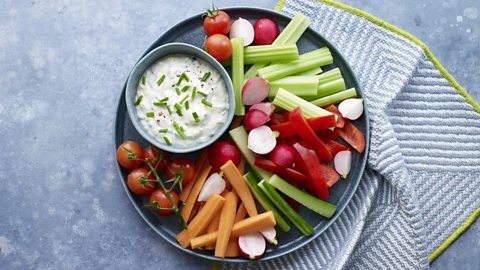
Things to avoid
“The only thing I try and ward people off doing is putting anything on a charcuterie board that isn't edible, such as flowers,” says Thomson. After all, you don’t want to take up valuable retail space with things you can’t eat. It might look pretty for the picture but we’re here for the food.
Bringing it all together
It’s not just about the ingredients, the way you present it is also important. Even if you’re not confident when it comes to presenting food with a flair, it’s easy enough to make your charcuterie board look beautiful.
Charcuterie wreath
To add a touch of festive cheer, present your ingredients in the form of a wreath. Cut your cheese into bite-sized pieces and use your chosen ingredients to make 30 or so cocktail sticks, alternating between the cheeses, antipasti and cured meat. Spoon chutney into a small ramekin and place in the centre of a large round plate. Neatly surround the ramekin with the prepared cocktail sticks to form a wreath shape. Et voila. This is so easy and looks beautiful.
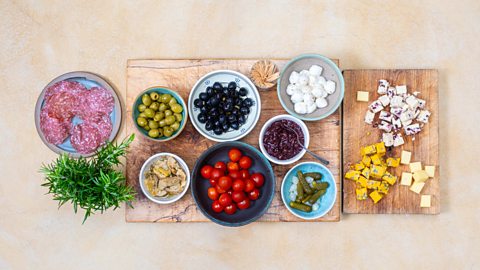
Image caption, Get all of your ingredients ready
Click through to see the stages of building a charcuterie wreath
1 of 4
Classic board
If you’re keen to make a more traditional board, I asked Thomson for her top tips:
Cut everything into bite-sized pieces. Make it accessible for everyone to pick up with their fingers and pop straight into their mouths. Slice your saucisson, cube your cheddar and quarter your figs.
Present your cheeses in different ways. Manchego, you could do in slices as it's automatically in those lovely long triangles and so you could fan them out, whereas you could crumble mature cheddar.
If you’re using any fruit or veg that might brown once cut, drizzle in a little lemon juice so it retains its colour.
Final tips from me. Take off packaging! Cling film, plastic sheets and plastic tubs are not a good look. Remove what you can before arranging the board. And get creative! You don’t have to be a natural artist to give it the wow factor. Folding, cutting and scattering your ingredients across the board will make it look attractive. Don’t hold back.
Originally published December 2024
Want more? Visit BBC Food on Instagram, Facebook and Pintrest. Want to watch the latest Food TV programmes? Visit BBC iPlayer.
